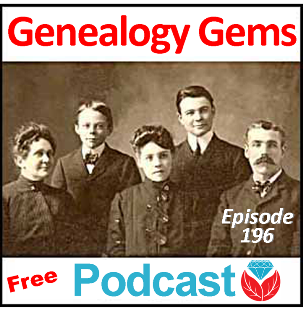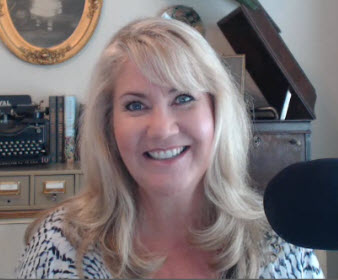Jewish Genealogy Research
- unique features that JewishGen.org has to offer
- the best regional websites
- what you need to do before you dig into these websites
You can watch here, or click “Watch on YouTube” to watch at the Genealogy Gems YouTube channel where you can also view the live chat by signing into YouTube with a free Google account.
Episode 57 Show Notes
Interview Transcript
Lisa Louise Cooke: When I think of Jewish genealogy, immediately my mind goes to JewishGen.org, and I was hoping you could start us off with an overview of that. I know that you’re involved with them and boy, do they have a lot to offer!
Ellen Kowitt: JewishGen is really the premier main source for Jewish records on the internet today.
It’s run as a non-profit and it’s actually a part of a museum on the lower side of Manhattan called the Museum of Jewish Living Heritage. It’s run by a professional executive director, Abraham Grohl, but then there are thousands of volunteers that participate as research division directors, who help to identify records, index records, and translate records because language is a big issue in Jewish genealogy.
They’ve developed some really great data sets that can be searched for free by anyone. There is no charge to search JewishGen. Similar to FamilySearch, they ask that you register for a username and a password, but they don’t sell your name and it’s not going to go anywhere past accessing that website.
JewishGen
They have different tools they have developed that are unique to searching Jewish records.
I think there are a lot of entry points into JewishGen. For a novice, particularly beginners who have not done a lot of research anywhere on the internet, it can be a little overwhelming. They have a unified search, which combines the data sets from hundreds of records into one search function, because you can search each of these data sets separately. But if you’re just browsing and curious, and just want to throw your names in, the unified search is a great place to start.
Something that is really exciting about it is that they’ve had these special algorithms developed that are unique to Jewish names and Jewish languages. I’ll mention the Jewish languages in a minute, but it’s similar to the National Archives in the United States, which developed what we call the Soundex, which is an alpha-numeric code assigned to your name. It helps you navigate other spellings to your name that are similar, but maybe your family didn’t spell it that way, but it could be found in a record that way. The American Soundex doesn’t always work on Jewish or mostly Eastern-European names, so these special Soundexes were developed on JewishGen that are now used throughout the Jewish genealogy world on other databases as well. One is called the Daitch–Mokotoff. Another is called the Beider-Morse, but JewishGen doesn’t call them that. When you go in, it’s blind to you.
You’ll put your name or your town name into the search engine and there is a form with fields that you can populate. It doesn’t matter if you’re spelling the names of your given name, your surname, or your town name correctly, because you’re going to be able to pick a couple of different ways to search in a drop-down menu.
The first one will be called “Sounds Like,” the second is “Phonetically Like,” and then it goes into “Starts With,” “Is Exactly,” “Fuzzy Match,” “Fuzzier Match,” and “Fuzziest Match.” My recommendation is always search on “Sounds Like” and “Phonetically Like” because those are Daitch–Mokotoff and Beider-Morse Jewish algorithms for Jewish names and places. So that’s really, really helpful.
Many times people coming to Jewish genealogy are just hung up on names, where they come from, and figuring out an immigrant’s place of origin. Because, think about it: nobody spoke English in the Russian Empire or the Austro-Hungarian Empire, which is where a majority of Jews came from after 1880. So, they’re speaking languages like German and Russian, Lithuanian and Polish, and even Yiddish, which is linguistically more like German although it is written with Hebrew letters.
These immigrants come to American ports and there could be an immigrant from another part of the world with a different kind of accent, like an Irishman. So, an Irishman in America listening to a Yiddish speaker from Russia – of course they’re going to butcher spelling the names. It’s just par for the course.
People can’t get hung up on the spellings of Jewish names, particularly the surnames and the towns of origin where they are emigrating from. Of course, those towns are important to narrow down and understand where they were, because that’s where you’re going to look for the records.
JewishGen’s Communities Database
That’s a second point about JewishGen that’s so helpful. They have a Communities Database, and that lists over 6,000 places where Jews mostly lived in the largest populations around Eastern Europe. In many of those places, Jews don’t live there anymore, but they will outline for you in different time periods where the records are or where they were.
We always refer to Jews coming from Russia because we see that on passenger manifests or census records. But a lot of times when you see Russia as a place of origin for a Jewish family, if they came before 1917, that was Russian Empire. The Russian Empire doesn’t exist anymore, and what was the Russian Empire pre-1975 is not Russia-proper today.
There are a lot of countries where your family could have come from, including Poland, because part of Poland was in the Russian Empire. Your family might actually be from Lithuania, Latvia, Belarus, or Ukraine, or even some places in the south that don’t exist anymore. There used to be an area referred to as Bessarabia, and another one, Bukovina. These don’t exist anymore. Even Prussia, when you talk about the German Jews who came over, and this is true for non-Jews, too. There is no Prussian Empire anymore, and what was the Prussian Empire is now largely Poland, parts of Russia, and Germany of course. But it’s misleading that if your family spoke German and said that were Prussian, that they were German the way we think of Germany today. A lot of Jews came from Prussia, so that’s why I mention it.
Those are the key things about JewishGen. It helps with you the name complications and determining what other spellings there might be in records. It also helps you with locating these towns and what the administrative districts today would be.
How to Get Started in Jewish Genealogy Research
If you’re researching a Jewish family, it’s no different than any other American family, if you’re starting in America. You start with the civil records, the vital records, the census records, and the passenger manifests. None of these American records are divided by faith or ethnic group. So, a Jewish person, or if you’re researching a Jewish branch, should be starting the same way as any other American research. Start with yourself, work backwards, go through and exhaust all of the American records that you can, which will help you determine what those original names and place they came from are. That’s where JewishGen really helps you. It’s kind of like a 102 class. You have to do the American 101 records, and then when you’ve exhausted all of that, you jump to the Jewish records, which are largely available through JewishGen.
JewishGen Networking
And the big point about JewishGen is the networking, because there’s this huge discussion group. They are now on Facebook with a group.
They have something called the JewishGen Family Finder, where you can register the names you’re looking for and/or the towns. Likewise, you can search to see whom else is researching the same names and towns that you are.
Through the messaging on JewishGen, you can get in touch with them and say, “Hey this is my story. Can I see your tree?” or “Do you have any family photos?” or “Have you had any success finding records for the little town in the middle of Ukraine?” Or even, “Have you hired a researcher that was helpful in pushing your research back in this particular archive in Lithuania?” It’s a fantastic way to find people researching the same obscure, small areas of the world that you are.
Lisa Louise Cooke – That’s an amazing resource, and you’re so right that we still have to follow the basic genealogy methodology. We still need to go through those records here. It’s tempting – I know people will say, “Well I know they were Jewish” so they’ll want to jump into that, and yet you miss so many clues that would probably come in super handy once you get over to JewishGen and you’re ready for that.
Ellen Kowitt: Absolutely…I find people who come to Jewish genealogy as beginners have not done that. I’m often backtracking and teaching American research before I ever get to a single Jewish record. I think that it’s really important that people take a look at (American records).
If they’re not in the United States and they’re listening, Canadian records or British records, wherever you might be starting from. You need to start in the country where your person that you’re researching is located, with those records first.
JewishGen Research Divisions
Lisa Louise Cooke: That’s a great point. I know for my own Sporowskis who were German-East Prussians, really they’re out of Belarus. I’m pretty sure that even though my great-grandfather later was going to the Lutheran church in America, I think they were a Jewish family back in Belarus. JewishGen has been one of the few places to find information about some of these locations that have changed names and boundaries. It’s just an amazing resource in that way.
Ellen Kowitt: Belarus is a good example. JewishGen has maybe over 20 research divisions. I happen to be the director for what’s called the USA Research Division, and just to define that, it’s not census records and passenger manifests. It’s looking at records held at Jewish repositories that are in the US, like the American Jewish Archives or the Southern Jewish Historical Society.
There are research divisions geographically all throughout Eastern Europe and there is one for Belarus called the Belarus Research Division. If you click on their link from JewishGen’s drop-down menu, they have their own website and they give a lot of maps, from now and then, of what Belarus was, and lists of towns divided by province, or what was gubernia. There are ways to connect with people and search what their records are.
Here’s a little tip I have about Research Divisions and any project on JewishGen. If you don’t find what you’re looking for and you really think it might be there, or you’re spelling it wrong and it’s not showing up in the Soundex, contact whoever the person is on that record set or who the Research Division director is, or who the town leader is.
In Ukraine, there are hundreds of town leaders for these little towns and what we find is that the town leaders and the Research Division leaders often know or are holding onto records that are not online. If you’re not finding something, it’s free to send an email! Just inquire and say, “Do you know anything else about Grodno, Belarus in 1854? Or the name Cohen?” or whatever it is, and you just never know what these folks have because I have found there are a lot of offline lists that the experts know about.
Lisa Louise Cooke: That’s very good insider information. It’s true, as you go into your genealogy research you get more and more daring and send that email. All they can do is just not be available. But it sounds like those folks are more than happy to help. What a wonderful idea.
Regional Jewish Genealogy Resources
Lisa Louise Cooke: We were talking about specific regions and I’m sure there are all kinds of different things here, but what other types of websites might be out there for regional Jewish genealogy?
Ellen Kowitt: It’s a little confusing. There is kind of a hierarchy. It’s not coordinated by any organizing body, but there are three independently run Jewish database sites. When I say the names, sometimes people say, “Oh that’s part of JewishGen.” They’re not. They are run independently. The three are:
- JRI-Poland which stands for Jewish Records Indexing Poland,
- Gesher Galicia, and I’ll define that for you.
- And what we used to call LitvakSIG, and SIG stands for Special Interest Group.
All three of these groups kind of have roots in JewishGen and then for different organizing reasons all wanted to organize as independent non-profits. But they share their data. Now, do they share all of their data? Do they share their data at the same time? Are they sharing it in the same place? The answers really vary. This is why, I always say, if you’re brand new, check out Unified Search on JewishGen.
Ancestry actually has some of LitvakSIG, some of JRI-Poland, and some of JewishGen’s records. Just recently LitvakSIG released some of their records to MyHeritage. So, there is some overlap back and forth on the data sets. But if you’re from these three particular geographic regions, I would not only be looking on Ancestry, FamilySearch, and JewishGen. I would always go to their original databases on each of their original websites.
LitvakSIG
LitvakSIG really stands for Lithuania, but Lithuania today is really different than the geographic borders of Lithuania a hundred years ago. When you look at modern-day Lithuania on a map, if your family is coming from a part of Latvia or Belarus or an area of Russia that surrounds that area, you might want to look there. I have this corner of southwestern Lithuania that part of my family came from, but it has also been Prussian, it has been Suwalki, Poland, and it’s right near Belarus, but yet I found records in Lithuania in LitvakSIG. I have also found them in Suwalki from JRI-Poland. So, loosely when you define your location, consider what’s geographically around the modern-day borders. But LitvakSIG is predominantly Lithuania and a lot of Jews came from Vilnius and Kaunus and all these places up there.
JRI-Poland
The second one is JRI-Poland. They are fantastic in their records acquisition. They’ve had partnerships with the Polish state archives. They give locations of microfilm that are for Polish municipalities at the FamilySearch digital collection. They have tons of volunteers who have worked there for 30 years. It’s extremely extensive.
For listeners who don’t know, the Polish State Archives has largely gone online, so a lot of vital records are digitized and you can go right to the record. Now, it may be in Polish or Russian, but you can get to those records for free, just like you can on FamilySearch sometimes.
JRI-Poland is just a powerhouse for getting access, using their indexes first to locate if there are records for your family in a town, using the Soundexes that are the Jewish Soundexes, and then getting to the original record. I just love JRI-Poland.
And be loose on those borders because it’s going to include Suwalki and those areas north on the Lithuanian-Russian border. Even the Belarus border and that Prussian border on the other side. For JRI-Poland, ‘cast a broad net’ is areas that were ever considered Poland, even on the southern side, too.
Gesher Galicia
The third one is called Gesher Galicia, also run independently, and also shares data with JewishGen. Galicia does not exist anymore. It was a designation for an area that today you would think of on a map as western Ukraine and eastern Poland, and a lot of Jews lived in Galicia. Unique to that area is that it was Austro-Hungarian Empire at one point, so the records are in German, not so much in Russian or in Polish.
But Gesher Galicia has got a fantastic search engine on their database, and they are another powerhouse that is just continuing with their volunteer army of adding so many great data sets.
They’re really good, too, at allowing you to list what towns you’re researching if you join, and I think they have a small membership fee. In fact, each of them have a membership fee that they’ve added on, and I think that just gives you access to records maybe a little bit sooner.
These three are often lumped in with JewishGen but are really organized as separate organizations and they acquire records and index them in a different way.
Lisa Louise Cooke: That’s a great overview and it reminds us, like with all genealogy, that when you see partners working together and they end up with records on multiple sites, I find myself wanting to look at those records, even if they’re the same, on every site. You never know what the nuances are. You never know if their image is clear. There are so many different possible variations.
Jewish Records at Ancestry.com
Ellen Kowitt: There are! I have taken a deep dive on Ancestry’s records of JewishGen. They started an arrangement awhile back, I think in 2008, and JewishGen gave them a bunch of records in return for Ancestry housing their servers. So a great business arrangement for a little non-profit like JewishGen, but confusing for people like researchers that only use Ancestry and never look any further.
Certainly if you’re finding things on Ancestry (Jewish Records at Ancestry) that are JewishGen, you want to go to JewishGen and search also because JewishGen has not updated all the records that they sent to Ancestry ten or more years ago. There are unique records that were never sent to Ancestry, and you pick up those Jewish Soundex search capacities on JewishGen.
Now, Ancestry’s search has definitely advanced in recent years but it’s not the Beider-Morse the Daitch–Mokotoff Jewish algorithms for searching Jewish names. If you can’t find somebody on the JewishGen collection at Ancestry, go to JewishGen and try running the search there.
Holocaust Research
Lisa Louise Cooke: Another area I can think of as a roadblock area for folks in their research is around the Holocaust. What kinds of resources do we have to conduct research when it comes to the Holocaust?
Ellen Kowitt: I started doing this about 25 years ago and it used to be that either the records were not released by some of the archives in Russia or in the East, or they weren’t in English, or they weren’t indexed. You would put in these requests and it would take literally years for certain repositories to answer a basic inquiry with “Yes” or “No” if they have a card on your family.
I think there was a lot of mythology build around ‘you can’t document the Holocaust and what happened to people’ and what we’re finding all these years is later is that there are so many records. Plenty of people are documenting their families. We are continuing to find more resources available online, even from repositories that are traditionally not in English.
It’s hard to say where to start, because the story of the Holocaust has also evolved. It used to be we learned in school, if we even learned at all about the story of the Holocaust, that it was the story of the concentration camps and the Jews being gassed, and that’s certainly true. But there are so many other elements of the Holocaust like the story of the 1 ½ million Jews killed in Ukraine before anyone ever was killed at Auschwitz. We call this “the Holocaust by bullets” (and the story and most of what was the Soviet Union at that time), was the Jews were rounded up and, this is gruesome, but they were executed and left in mass graves that are unmarked, largely, throughout what was the Soviet Union.
Even Jews who knew their family was tied up in those kinds of stories thought there was no way to figure out what happened to their family or the town. But we do have records. The Russians kept records. It turns out the Germans kept records. A lot of this has become available online that you can search in English.
It really depends, for a family that knows they have a Holocaust story, where they were, what country they originated in, if you know the story that they went to a camp, or if they were in a small town where there was a mass grave. You’re going to be looking at very different resources.
I would say, if you only had to look at one and you wanted to just start this process, Yad Vashem’s website in Israel, in English, would be the place to do a general top-level search. The reason is because Yad Vashem is like the US version of the (United States) Holocaust (Memorial) Museum in DC, and they have resources too, but the one in Israel is called Yad Vashem and it has a larger collection.
They have also collected these pages of testimony from survivors who talk about their family members and where they last saw them, or if they know the exact story about what happened to them or their whereabouts throughout the war. Thousands of these pages have been submitted and they’re searchable. You can see the original pages that people submit and you can even get in contact with the people submitting them. It’s a great networking opportunity for people looking to connect. Yad Vashem has these great success stories, less and less because the survivors are aging out, where they connected people who still had living relatives in Argentina, Australia, or in Europe, and they’re just fantastic renewal stories.
But yes, complicated topic. It is possible to learn what happened to a community, hopefully to an individual. Records are at Bad Arolsen, the Arolsen archives in Germany, in addition to Yad Vashem and the US Holocaust Museum.
JewishGen does have a Holocaust collection worth searching, although it’s smaller than these other larger repositories. There are all kinds of things on the internet – webinars, speakers, and even books that have been published on how to track down victims and survivors of the Holocaust.
And non-Jewish, too. I recently was looking into someone who came from a Ukrainian Orthodox family and they were shipped out of Ukraine to what would be now the Czech Republic, and they were in a work camp. Sometimes these repositories you think of as Jewish record repositories for Jews in the Holocaust also tell the story of the non-Jewish victims of the Holocaust.
Lisa Louise Cooke: I so appreciate your vast knowledge on this. I know you teach people about genealogy, Jewish genealogy – tell us a little bit about you got started in genealogy and then into it professionally.
Ellen Kowitt: I guess like everybody out there, I just have that gene. Even from a young age, I was the one who just gobbled up the stories at the holiday tables and remembered the names and connected the relationships and just kept track of it in my head, long before I realized that was not normal, it was unusual and not everyone does that.
There is a woman, Sallyann Sack, who writes a lot of books on Jewish genealogy and she’s one of the publishers of Avotanyu, which is both a journal on Jewish genealogy and also a publishing company on books about Jewish genealogy. In my twenties, I happened to go to a lecture she gave at a synagogue in Washington DC, 25 or more years ago. She said “Hey we have this club! It’s a Jewish genealogy society and we’re doing a beginners workshop. Do you want to come?” I went and there was no looking back. I just got the bug. I started interviewing relatives like we all are taught, to talk to the oldest people first and the records can wait.
It just went from there. I got super involved as a volunteer. I actually think volunteering is a great way when you’re a beginner to learn about record sets. I have seen probate records, naturalizations, and Jewish records that I would never have found in my own family by helping index through a project with a local society. That was fascinating to me.
Then one day a friend insisted on paying me money to do some research on his mother, and I actually liked it. I thought, wow, if I can make a few extra dollars to pay for my genealogy obsession – and these websites can be expensive, the conferences cost money – but if I can make money and help to pay for my obsession, then I’m going to be a professional. So, that’s how I fell into that and it’s grown from there.
Lisa Louise Cooke: I think those of us who caught the bug when we were young are really fortunate because we got opportunities and I think had a focus on talking to and recording some of those stories. I know that’s probably people’s biggest regret, when they didn’t think about it back when they had an opportunity to interview some of the older relatives. I know in my case I just treasure the few interviews that I did do and I still have.
Ellen Kowitt: Me too.
Lisa Louise Cooke: I really appreciate you sharing all these wonderful resources. And of course, folks can visit you at your website at EllenKowitt.com, and I know that you do lecturing and all kinds of professional work on genealogy, and the wonderful article, Find Your Jewish Roots Online, in the May/June 2021 issue of Family Tree Magazine. Ellen, it’s been a delight to talk to you. Thank you so much for joining us here on the show.
Ellen Kowitt: Thank you so much for having me, I enjoyed it!
Jewish Genealogy Reading
Click here to read more articles at Genealogy Gems featuring Jewish records and Jewish Genealogy.
Resources
- Download the ad-free show notes and the BONUS Jewish Genealogy Cheat Sheet (Premium Member log in required) Not a Premium Member? Become a Genealogy Gems Premium Member
- Watch past free episodes of Elevenses with Lisa.
- Get your official Elevenses with Lisa mug
- Subscribe for free to our Genealogy Gems YouTube channel so you’ll never miss another episode.
Questions and Comments
Please leave your questions and comments below.
Get My Free Genealogy Newsletter
Please click here to sign up now to receive my free weekly email newsletter and bonus article download.
Episode 196
The Genealogy Gems Podcast
Episode 196
with Lisa Louise Cooke
In this episode, expert Kate Eakman from Legacy Tree Genealogists joins us with some tips for those starting to trace their Irish ancestors into Ireland. She shares some great websites for Irish research and places to look for that elusive Irish home county;and an exclusive coupon code for anyone who could use some expert help on a tough research problem.
Listen now – click the player below
In this episode, expert Kate Eakman from Legacy Tree Genealogists joins us with some tips for those starting to trace their Irish ancestors into Ireland. She shares some great websites for Irish research and places to look for that elusive Irish home county;and an exclusive coupon code for anyone who could use some expert help on a tough research problem.
Additional episode highlights:
- Gems listeners respond with strong opinions on sharing gossip about our ancestors;
- Genealogy Gems Book Club surprises: a past featured author has a new book out?and something different for the new Book Club pick;
- Mark your calendars and make some plans for big conferences in 2017;
- Organize your DNA test results and matches to help you get the most out of them, now and in the future.
BOOK CLUB NEWS: NEW FROM NATHAN DYLAN GOODWIN
British author Nathan Dylan Goodwin, featured in the past on the Genealogy Gems Book Club with his novel The Lost Ancestor has a NEW novel out in same forensic genealogy mystery series.
The Spyglass File: Hero Morton Farrier is back, and he’s on the trail of his client’s newly-discovered biological family. That trail leads to the fascinating story of a young woman who provides valuable but secret service during World War II?and who unknowingly became an entry in the mysterious Spyglass File. The connection is still so dangerous that Morton’s going to have bad guys after him again, and he may or may not be kidnapped right before he’s supposed to marry the lovely Juliette. Meanwhile, you’ll find him anguishing over the continuing mystery of his own biological roots?a story that unfolds just a little more in this new book.
MAILBOX: School Records Suggestion
Responding to Genealogy Gems Podcast episode #194:
“For those that have these old school records, consider donating them (even a digitized image) to the school from whence they originated. I shared class photos taken in the 1940s with my parents’ grade schools. The school was so appreciative! I hope another researcher down the road benefits from the pictures as well.” – Laura
MAILBOX: Passing on the Gossip
Blog post with Jennifer’s letter, my response, and several more comments
Here’s a link to a post about the stamp pendant Jennifer sent me
Lisa Louise Cooke uses and recommends RootsMagic family history software. From within RootsMagic, you can search historical records on FamilySearch.org, Findmypast.com and MyHeritage.com. In the works: RootsMagic will be fully integrated with Ancestry.com, too: you’ll be able to sync your RootsMagic trees with your Ancestry.com trees and search records on the site.
 Keep your family history research, photos, tree software files, videos and all other computer files safely backed up with Backblaze, the official cloud-based computer backup system for Lisa Louise Cooke’s Genealogy Gems. Learn more at http://www.backblaze.com/Lisa.
Keep your family history research, photos, tree software files, videos and all other computer files safely backed up with Backblaze, the official cloud-based computer backup system for Lisa Louise Cooke’s Genealogy Gems. Learn more at http://www.backblaze.com/Lisa.
INTERVIEW: Kate Eakman and Getting Started in Irish Genealogy
GENEALOGY GEMS EXCLUSIVE OFFER: Go to www.legacytree.com/genealogygems and use coupon code SAVE100 to save $100 on your purchase of research services.
Legacy Tree Genealogist specialist Kate Eakman shares tips about getting started in Irish genealogy. Here are the highlights:
Q: Where would you recommend the hobbyist start their Irish search?
A: Not a lot of Irish records are available online for free. Top sites for Irish records include: FamilySearch.org (click here for their Ireland landing page), National Archives of Ireland, Irishgenealogy.ie and Findmypast.com (click here for their Ireland page).
Q: What does a researcher need to know before crossing the pond?
A: Where the person was born in Ireland. The county. Find out if they were Protestant or Catholic. Click here for an interactive map of Irish counties, including those of Northern Ireland.
Q: Where do you recommend they look for that info in the U.S. crossing the pond?
A: Death records, marriage records, church records (keep an eye on extended family), passenger lists, naturalization papers. Keep an eye out for extended family members who may have come from the same place. Be aware of traditional Irish naming conventions and patterns.
Q: At what point in the Irish research process do hobbyists usually get stuck?
A: Common names regularly recycled, so it can be tough to sort out who is who. Also, a huge fire at the Public Records Office in Dublin in 1922 destroyed the bulk of government records. Click here for a description of what was lost and what surviving fragments are coming soon to Findmypast.com.
Q: How does it work to work with a professional genealogist at Legacy Tree Genealogists?
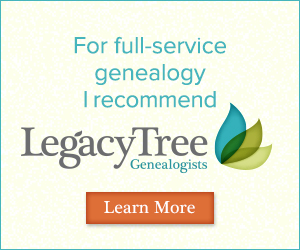 A: Here’s the process. A manager calls or emails the client to discuss their needs and parameters. They identify the goals and determine what the client already knows. A goal is settled on and then a researcher is assigned to the client. A written report of the research conducted is provided.
A: Here’s the process. A manager calls or emails the client to discuss their needs and parameters. They identify the goals and determine what the client already knows. A goal is settled on and then a researcher is assigned to the client. A written report of the research conducted is provided.
GENEALOGY GEMS EXCLUSIVE OFFER: Go to www.legacytree.com/genealogygems and use coupon code SAVE100 to save $100 on your purchase of research services.
The Legacy Tree Discovery package provides for 3.5 hours of preliminary analysis and research recommendations. It’s a great way to get started if you’ve hit a brick wall in your research and could use some expert guidance. Click here to learn more.
 This episode is sponsored by MyHeritage.com. the place to make connections with relatives overseas, particularly with those who may still live in your ancestral homeland. Click here to see what MyHeritage can do for you: it’s free to get started.
This episode is sponsored by MyHeritage.com. the place to make connections with relatives overseas, particularly with those who may still live in your ancestral homeland. Click here to see what MyHeritage can do for you: it’s free to get started.
DNA GEM with Your DNA Guide buy bv medication Diahan Southard: Organizing Your DNA
I can tell whose turn it is to unload the dishwasher by the state of the silverware drawer. If either of the boys have done it (ages 13 and 11), the forks are haphazardly in a jumble and the spoon stack has overflowed into the knife section, and the measuring spoons are nowhere to be found. If, on the other hand, it was my daughter (age 8), everything is perfectly in order. Not only are all the forks where they belong, but the small forks and the large forks have been separated into their own piles and the measuring spoons are nestled neatly in size order.
Regardless of the state of your own silverware drawer, it is clear that most of us need some sort of direction when it comes to organizing our DNA test results. Organizing your matches entails more than just lining them up into nice categories like Mom’s side vs. Dad’s side, or known connections vs. unknown connections. Organizing your results involves making a plan for their use. Good organization for your test results can help you reveal or refine your genealogical goals, and help determine your next steps.
The very first step is to download your raw data from your testing company and store it somewhere on your own computer. I have instructions on my website if you need help.
Once that is complete, we can get to the match list. One common situation for those of you who have several generations of ancestors in the United States, you may have some ancestors that seem to have produced a lot of descendants who have caught the DNA testing vision. This can be like your overflowing spoon stack, and it may be obscuring some valuable matches. But identifying and putting all of those known matches in their proper context can help you realize these abundant matches may lead to clues about the descendant lines of your known ancestral couple that you were not aware of. In my Organizing Your DNA Matches quick sheet I outline a process for drawing out the genetic and genealogical relationships of these known connections to better understand their relationship to each other and to you. It is then easier to verify that your genetic connection is aligned with your known genealogical paper trail and spot areas that might need more research.
This same idea of plotting the relationships of your matches to each other can also be employed as you are looking to break down a brick wall in your family tree, or even in cases of adoption. The key to identifying unknowns is determining the relationships of your matches to each other, so you can better see where you might fit in.
Another helpful tool is a trick I learned from our very own Lisa Louise Cooke, and that is Google Earth. Have you ever tried to use Google Earth to help you in your genetic genealogy? Remember that the common ancestor between you and your match has three things that connect you to them: their genetics, surnames, and locations. We know the genetics is working because they are showing up on your match list. But often times you cannot see a shared surname among your matches. However, by plotting their locations in the free Google Earth, kind of like separating the big forks from the little forks, you might be able to recognize a shared location that would identify which line you should investigate for a shared connection.
So, what are you waiting for? Line up those spoons and separate the big forks from the little forks, your organizing efforts may just reveal a family of measuring Spoons, all lined up and waiting to be added to your family history.
GENEALOGY GEMS BOOK CLUB: Sarah A. Chrisman

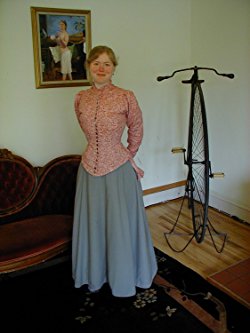
Author spotlight: Sarah A. Chrisman, living icon of the Victorian age.
Sarah and her husband Gabriel live like it’s about 1889. They wear Victorian-style clothing and use a wood-burning stove and antique ice box. Sarah wears a corset day and night Gabriel wears 19th century glasses. No TV, no cell phones?and Sarah isn’t even a licensed driver.
For this Book Club, you can take your pick of Sarah’s books! Which would you like to read?
This Victorian Life: Modern Adventures in Nineteenth-Century Culture, Cooking, Fashion and Technologies, a memoir Sarah’s everyday life. The Book Club interview in December will focus mainly on this book.
Victorian Secrets: What a Corset Taught Me about the Past, the Present and Myself;
True Ladies and Proper Gentlemen: Victorian Etiquette for Modern Day Mothers and Fathers, Husbands and Wives, Boys and Girls, Teachers and Students, and More;
First Wheel in Town: A Victorian Cycling Club Romance. This is from her series of light-hearted historical fiction set in an era she knows well!
In honor of the Book Club theme, Genealogy Gems is going Victorian! From now through the end of the year, you’ll find Victorian-inspired crafts, recipes, décor, fashions and more on our Instagram and Pinterest sites, which of course we’ll link to regularly from the Genealogy Gems website, newsletter, podcast show notes and Facebook page. Nobody does sumptuous holiday traditions quite like the Victorians, and we look forward to celebrating that.
BONUS CONTENT for Genealogy Gems App Users
 If you’re listening through the Genealogy Gems app, your bonus content for this episode is a PDF with instructions on accessing the new free Guild of One-Name databases on FamilySearch.org.
If you’re listening through the Genealogy Gems app, your bonus content for this episode is a PDF with instructions on accessing the new free Guild of One-Name databases on FamilySearch.org.
The Genealogy Gems app is FREE in Google Play and is only $2.99 for Windows, iPhone and iPad users.
Receive our FREE Genealogy Gems Newsletter:
Subscribe to the Genealogy Gems newsletter to receive a free weekly e-mail newsletter, with tips, inspiration and money-saving deals.
Disclosure: This article contains affiliate links and Genealogy Gems will be compensated if you make a purchase after clicking on these links (at no additional cost to you). Thank you for supporting Genealogy Gems!
How to Research Witnesses for Genealogy Success
Show Notes: You may not have been around when your ancestors lived, but there were witnesses to the important events in their life. Genealogist Robyn Smith shares her 3 step process from her new Family Tree Magazine article called Witness Testimony.
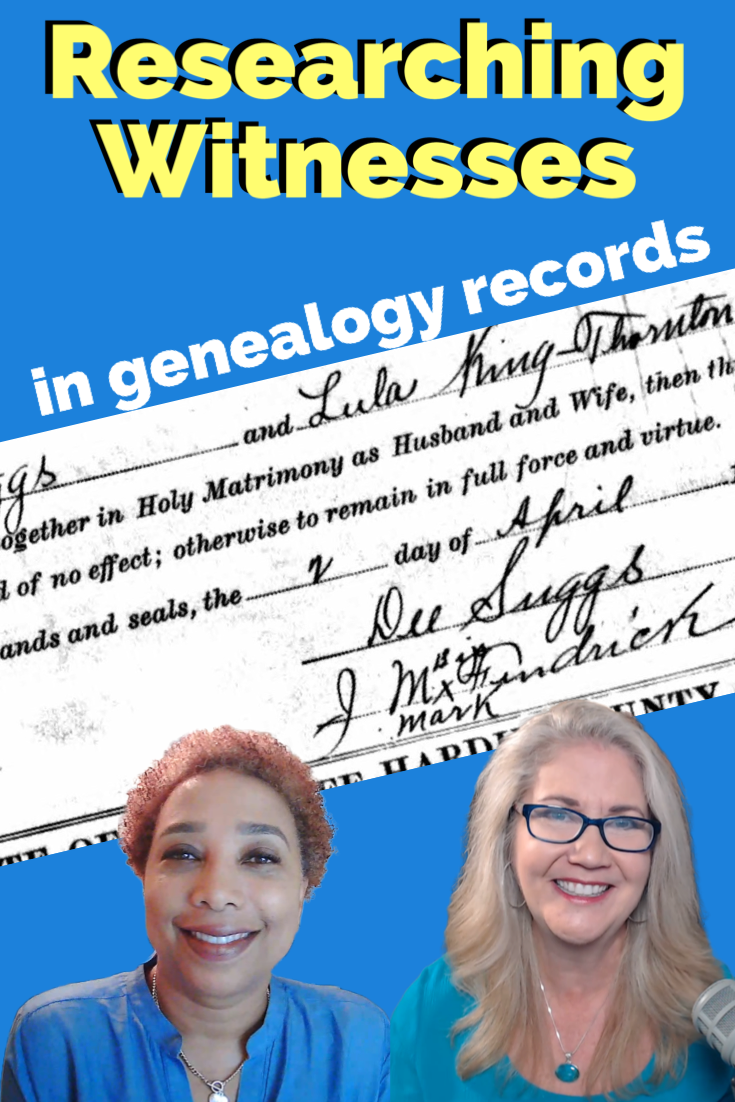
Pin it on Pinterest! Free Genealogy Video
Get ready to find out how the witnesses named on your ancestors’ records can help you bust brick walls in your genealogy research!
Watch the Video Interview
Show Notes
(This interview has been minimally edited for clarity)
Downloadable ad-free handout with time stamps and links. (Premium Membership required)
Why You Should be Researching Witnesses
Lisa: I learned a lot from your article in family tree magazine. And I wanted to chat with you a little bit about that, because I think researching our ancestors’ witnesses is fascinating, and it’s something that people don’t always think about. We may focus on the names we recognize and not so much on the ones that we don’t. I’d love to have you give your “elevator speech” if you will, as to why people should be taking the time to research witnesses.
Robyn: Most of us in the genealogy community eventually hear about this thing called “cluster research”. We hear this phrase, the FAN club that genealogist Elizabeth Shown Mills describes, where we take a look at the Friends, Associates and Neighbors of our ancestors. I would consider witnesses and bondsman in that FAN club, in that cluster.
Simply put, witnesses can help us find more family. That’s the benefit of researching these individuals and the records in which they find them. We can break through some brick walls. And this type of research can also tell us about the community ties and some of the customs in that time and place. So, witnesses and bondsman are always my secret research strategy.
What is a Bondsman?
Lisa: You mentioned bondsman, and that might be a new term for some folks. We might be used to seeing perhaps an immigration record or a birth record, and we see witness. What is a bondsman?
Robyn: This is one of those terms in genealogy that has a slightly different meaning historically than it does today. By bondsman we just mean someone who pledges a sum of money as a bond for another. Sometimes in these records, we might see that they’re called a Surety. You might see that term used. The difference between that and a witness is that there’s a financial obligation involved. I always try to tell people, it’s similar to cosigning a loan today. Most of us would probably not cosign a loan for people that we didn’t trust or that we didn’t know very well. And so, if you can keep that concept in your mind, that’s the value and the benefit of researching those witnesses and bondsman.
Lisa: Yes, when there’s a financial tie, there’s some kind of relationship there. And I guess if we can research them, that might lead us back to even more records about our own ancestor.
Genealogical Records that Include Witnesses
What kind of records will we find them in? In what type of records are we going to find witnesses and even more specifically, this term bondsman?
Robyn: The big one we think of, of course, is marriage bonds. We hear that phrase a lot. We may see them in marriage records, almost all deeds are going to have some sort of witness involved, and wills. Also, in probate records we will see executors and administrators often have to have bonds. If you’re going to serve as guardian to someone, typically, that person has to have a bond as well. And so those are sort of the big ones.
We can also think of court cases, civil court cases when you’re trying to secure someone’s appearance at a future court meeting. And I actually have seen the courts go after that bondsman if that person doesn’t show up. So, some of these records can get pretty juicy.
And of course, I think a lot of us are probably familiar with pension, military pension records and southern claims.
The only thing that I would caution people to watch out for is sometimes the witness is really just the county clerk, a local lawyer or local justice of the peace. So, it’s in researching that witness or that bondsman that you’ll find out the relationship if there is any, to the person of interest that you’re researching.
Lisa: That’s a really good point.
The Goal of Researching Witnesses in Records
Do you go after witnesses primarily because you’re wondering if they are related? Or is it also about that FAN principle where they may not be related, but researching them might actually lead me to more records about my own ancestor because of their will, depending on what the relationship was? Do both of those play into the way you approach them?
Robyn: I would say both. I’m actually really excited when I see a witness or bondsman because the curiosity serves you very well, in genealogical research, as we know. It’s a good thing to be a nosy genealogist. I want to know, why is that person there? That’s the question that I’m trying to answer. And more than a few times, it has led me to more family that I didn’t know about, particularly if that individual had a different surname.
Now, another gotcha is that sometimes they end up in the records with just their initials. So, we first have got to confirm who that person is before we’re ready to say that they’re related to our person of interest. So, there are some cautions that we may need to be aware of as we’re doing this research. But it’s another stone to overturn as you’re doing your research. And I love it when I see a person listed in a record. I’m excited!
Lisa: Me too! I feel like oh, my gosh, I finally have another avenue that I can pursue, particularly in a brick wall situation.
3 Step Process for Researching Witnesses
In the article, you provide a three-step research process. Will you walk us briefly through that process?
Step 1: Transcribe the Document
Robyn: The first thing that I do when I find a document concerning my ancestor that has a witness or bondsman, is to transcribe the document. I want to make sure that we all are comfortable with the practice of transcribing. Transcription ensures that you are actually reading every single word in that document. It’s going to help you notice all of the details that you might miss if you are just looking at it in its current format.
There are a lot of great free tools available to us for transcribing. There’s GenScriber, or there’s Trint. I would also recommend Family Tree Magazine’s cheat sheet on reading old handwriting. That becomes very handy when you’re doing this transcription.
Step 2: Do the Research
The second step is to then do the research. I always say you want to research in a variety of records. I actually research the person as if they were my ancestor already. That means I’m looking in census records and deed records and court records and everything else trying to establish who this person is. And the things that we learn along the way, are not just that this person is in this time and place, which is very important to us as genealogists, but it also gives us a hint as to how old the person was. It also gives us a hint about their literacy in terms of whether they sign with their mark or whether they sign with a signature. It is in this second step, doing the deep research, that you probably will uncover whether or not the person is related to your family.
Step 3: Research the Law
The third step is to research the laws because as we know, laws governed everything about the sources that we use a genealogy. They’re going to govern who can serve as a witness and a bondsman, how old that person has to be, and also how many were necessary.
We need to be aware that these laws are going to differ from state to state or colony or a locale and also throughout time. I look at the published date laws that I can find in databases like Internet Archive and Hathi Trust and Google Books but you and also visit your local library, law library, or archive. You may have to do some deep digging.
Those are the three steps that I recommend: transcribe the document, research the individuals you find, and make sure that you research the laws.
Lisa: Fantastic advice!
The Power of Transcribing Genealogy Records
I’d love to ask you a little bit more about transcription because I think that is a step that can be tempting to skip. People think, oh, well, I read it, I want to get going! I want to add people to my tree, and they are tempted to not take the time to transcribe. Will you tell us a little bit more about transcription? Why should we take that time? And what are we looking for, instead of just typing the words?
Robyn: Transcription to me is one of the basics of one of the basic genealogical skills I think we need to master in order to be successful, particularly once we start going back further in time and encountering those much more complicated problems. And it’s one of those basics that will remind you, if you don’t do it over and over again, that there’s a reason why it’s recommended in genealogy.
I can’t tell you how many phrases I’ve realized that I don’t fully understand as I’m transcribing. And Step one is to understand what that document is telling you. So, if there’s a phrase that I come across, I might email an archivist, or I might call one of my genealogy friends who’s got a little bit more experience in that particular time and place. Transcribing helps us to do that, and it helps us to understand.
When I transcribe, I also typically turn it into an abstract. I’m also making sure that I do a citation. So, to me, those are the building blocks of successful genealogical research.
I would also include keeping a research log and have a research plan. Those to me are very critical research building blocks to long-term success in genealogy.
I understand the impulse to want to skip transcribing. But I can tell you over and over again that I come across phrases that I thought I knew, but once I’m transcribing it, I really realized that I don’t. There are lots of wonderful webinars and classes that you can take on transcription that can teach you simple rules when you’re transcribing, and they’re easy to learn. They’re not complicated rules. And I think that once you start doing it, you’ll get more comfortable with the process. It will really become second nature.
I hope that I can encourage everyone with our conversation to do more of that transcribing. I did a lot of it earlier, not necessarily knowing or understanding all the rules, and now I’m going back and sort of revisiting those documents. It’s always amazing when things will jump out at you that you didn’t notice before, or it just didn’t resonate.
I always recommend having a genealogy buddy. You can say to them, hey, can you take a look at this and tell me what you see? You can have a fresh set of eyes look at it and ask you a question. I’m a genealogy junkie, so I find all of this really, really exciting to me. I kind of lean into it. We’ve all got other things to do in our lives. I try to do an hour here and there; it might be an hour this weekend. But I’m sort of just always working towards a goal. And that transcription, I tell you, that’s a key first step!
Witness Research Example
Lisa: I don’t mean to put you on the spot, but do you have a witness story or just something that you spotted that you just would love to share with us?
Robyn: I do! My mother’s family, my maternal family is from Tennessee. I was researching my second great-grandfather, Mike Fenricks in Tennessee, where he lived. Almost every source in his life asserts that he was born in Alabama. And so, this is a problem that a lot of genealogists have. I had no idea where in Alabama I’m even though I thoroughly went through all of the sources that were available in that time and place.
I noticed that he served as bondsman to a man named Dee Suggs. And then I noticed that he jointly took a couple of sharecropping deeds with this same man Dee Suggs.
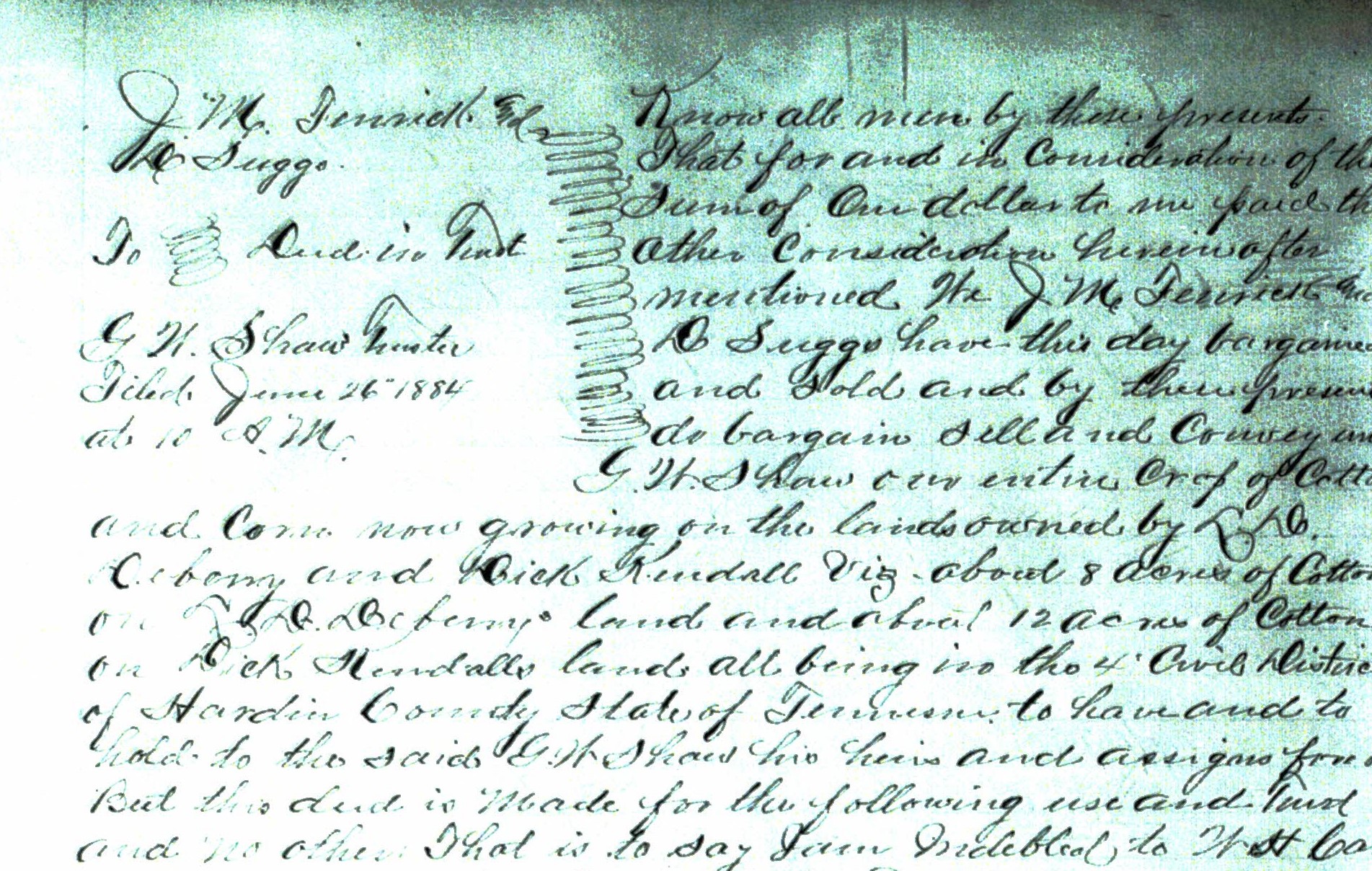
Sharecropping Deed: JM Fenrick and Dee Suggs
I also found him living in Dee Suggs’ house in 1920. So, the wheels start turning! Why is he interacting with this man and Dee Suggs who was also born in Alabama?

The Dee Suggs household in the 1920 U.S. Federal Census
So, when the records ran out, for my ancestor, I started researching Dee Suggs. And where did this witness lead me? Dee Suggs led me back to Lawrence County, Alabama. And in that 1870 census household was a man named Mike. And that man ended up being his brother, it was his half-brother. And the same man is my second great, great grandfather. They had migrated to Tennessee together. They had been formerly enslaved, and I found a Freedmen’s Bureau contract that their mother signed where she calls all of them, her children. The 1870 census doesn’t provide relationships, so I had that critical labor contract that said, Sofrona and her four children. And so, it makes all the sense in the world why he’s associating with him and living with him, and jointly, promising bond for him. It is because they were half-brothers!
Lisa: I knew you’d have a great story!
Robyn: That story is the crux of my cluster genealogy lecture that I do. I go into more details, but following Dee is what led me to that community and his place of origin in northern Alabama. It was very exciting.
Learn more about Robyn Smith
Lisa: And I know you bring many stories to your readers at Reclaiming Kin. Please tell us the URL address and what they will find there at your website.
Robyn: Thank you so much. The URL is www.reclaimingkin.com. I call it a genealogy teaching blog, and what I mean by that is, I might start off with something from my family history, but every single post is meant to teach a skill. And so, every post there talks about a methodology, a strategy or resource. It’s not just about my family history, it’s about helping all genealogists to grow their skills, and also meet the special challenges of researching the enslaved. I’d be really happy if your listeners would come to the blog, take a look, sign up for my mailing list. And I’ll send you a free PDF, all my favorite research tips.
Lisa: Robyn, thank you so much. We’ll all look forward to your article Witness Testimony in the Family Tree Magazine Jan / Feb 2023 issue. And I look forward to hopefully talking to you again soon.
Robyn: Thank you so much for having me on today, Lisa.
Learn more about Transcription
There’s so much more to learn about doing transcriptions! Check out my full-length Premium video class called Transcribing and Analyzing Historical Documents. It’s part of Premium Membership, and it is going to tell you everything you need to know about how to do transcription, the tools that I recommend, and so much more. And along with that video class, you also get the downloadable handout. Becoming a premium member has a lot of perks. Learn more here.
Resources
Downloadable ad-free Show Notes handout for Premium Members.
Trace Your Irish Ancestors with Four Historical and Geographical Tips
Let’s trace your Irish ancestors! Irish research tips are a must-have for this historically violent little island. Senior Researcher at Legacy Tree Genealogists, Kate Eakman, shares with you four historical and geographical tips to get you off to the right start.
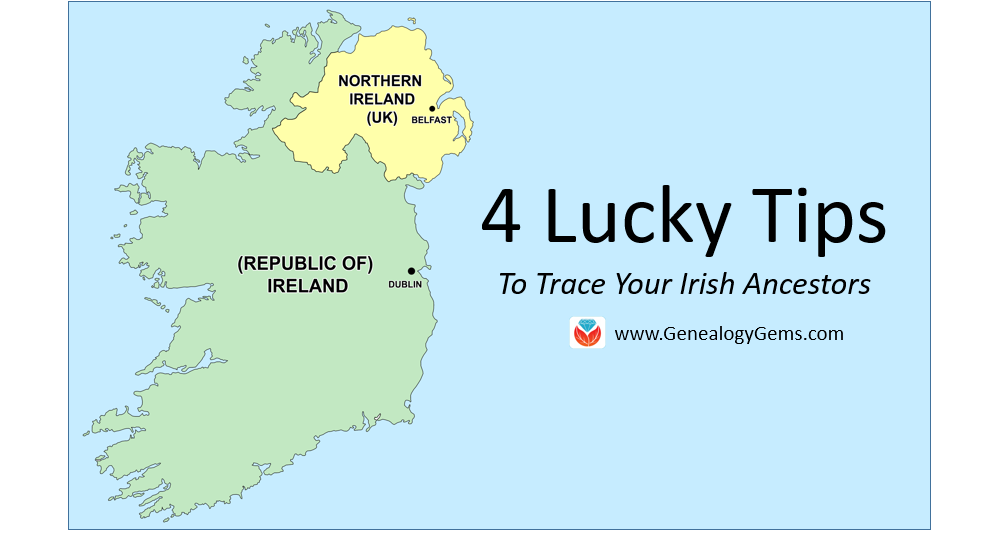
By Jonto at English Wikipedia [GFDL (http://www.gnu.org/copyleft/fdl.html) or CC-BY-SA-3.0 (http://creativecommons.org/licenses/by-sa/3.0/)], via Wikimedia Commons
Trace Your Irish Ancestors: 4 Tips
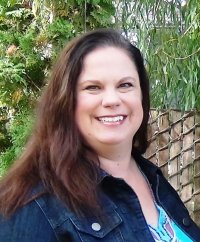
Kate Eakman from Legacy Family Tree Genealogists
Irish research can be difficult. Although the island is small–about the same size as the state of Indiana–its violent history and many divisions makes research complicated. In addition, many United States records simply report our ancestors were from Ireland with no indication of the county of their birth. However, knowing a little bit about the history and geography can provide the necessary clues. Here are four tips that can help you trace your Irish ancestors from the United States back to Ireland.
Tip 1: Understand the Island of Ireland Today
There are two distinct political entities on the island of Ireland: Northern Ireland and the Republic of Ireland. The dividing line was drawn by England in 1922. This is an important date to keep in mind when searching for more recent Irish ancestors.
The Republic of Ireland, or Eire, is an independent nation made up of the southern 26 counties of Ireland. The Republic of Ireland is predominantly Catholic, with about 3% of the population identifying itself as Protestant. Indices and links to copies of the civil birth records for the years 1864 to 1915, marriages between 1882 and 1940, and death records between 1891 and 1965 are available for free from the IrishGenealogy website. (These records include those of the Northern Irish counties up to 1922.) Official copies can be ordered from the General Records Office in Dublin.
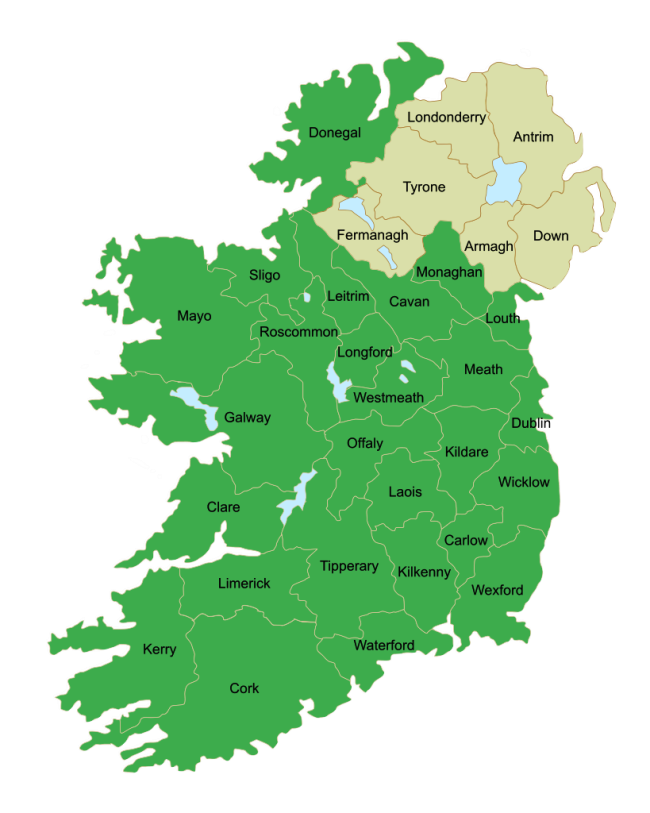
Map of the counties of Northern Ireland and the Republic of Ireland. Photo courtesy https://commons.wikimedia.org.
Northern Ireland, also known as Ulster, is a part of the United Kingdom–although it is self-governing like Canada or Australia. Although the counties of Northern Ireland are not officially used today, it is comprised of the traditional counties of Antrim, Armagh, Down, Fermanagh, Tyrone, and Londonderry (also known by the more traditional name of Derry). Although most Americans believe that Northern Ireland is a Protestant nation, the reality is that today there are almost an equal number of Catholics as there are Protestants in Northern Ireland. Civil birth, marriage, and death records can be ordered from GRONI (General Records Office Northern Ireland).
Tip 2: Turn to U.S. Census Records
From the 1880 U.S. Census through the 1920 U.S. Census, Irish ancestors who immigrated to the United States, or whose parents were natives of Ireland, simply reported they were natives of Ireland. However, since the 1930 U.S. Census was taken after the creation of the Republic of Ireland in 1922, it often noted the specific country from which ancestors originated.
In this sample (below) from the 1930 U.S. census, we can see John O’Reilly was born in “North. Ireland,” as were his mother and her parents. His father, however, was from the Irish Free State, or the Republic of Ireland. This information tells us where to search for John’s birth: in one of the six counties of Northern Ireland. His mother’s birth record will also be from Northern Ireland, and probably his parents’ marriage record also, since it is more traditional to marry in the bride’s hometown than the groom’s.
There is the potential that a much larger search will be necessary for John’s father’s birth record unless the marriage record can be found and it specifies in which of the 26 Republic of Ireland counties he was born.

John J. O’Reilly and his mother in the 1930 U.S. Census report. The detail shows where John was born, then his father’s place of birth, followed by his mother’s place of birth. The second line was the same information for John’s mother. Images courtesy http://ancestry.com.
If your Irish ancestor, or the child of that ancestor, is listed in the 1930 U.S. census, pay close attention to where they reported they and their parents were born. You might find a very helpful clue in that census report.
Tip 3: Look to Religion for Clues
While many people associate Roman Catholicism with Ireland, there are many Protestants living in Northern Ireland and fewer in the Republic of Ireland. Knowing your family’s historical religious preference can provide a small hint. If your family has always been Catholic it is likely they were Catholics in Ireland. However, as we have already noted, with almost all of the Republic of Ireland expressing a preference for Catholicism and about 45% of the citizens of Northern Ireland claiming allegiance to the Catholic faith, you can see a Catholic religious heritage is not particularly unique.
However, if your family history includes the Episcopal faith, or there is something that references “the Church of Ireland” in your family’s records, then your family was most likely Protestant when they lived in Ireland. You are also more likely to find your Protestant ancestors in Northern Ireland (with the understanding that there are Protestants throughout the Republic of Ireland).
If your family is or has been Presbyterian, there is a very strong likelihood your family is actually Scots-Irish with your ancestors immigrating to Ireland from Scotland, bringing their Scottish religion with them. You will find most of these ancestors in Northern Ireland.
Tip 4: Move on to Military Records
World War I (1914-1918) was particularly brutal to the Irish. More than 30,000 of the 200,000 men who enlisted were killed in this war. Songs such as “Gallipoli” and “The Foggy Dew” mourned the loss of so many young Irish men in foreign wars, especially since the 1922 Irish War of Independence followed closely on the heels of World War I.
If one of your Irish ancestors fought and died in World War I, you can find his name and more at the website Ireland’s Memorial Records. Many (but not all) of the memorials include the county in which the soldier was born, as seen below:
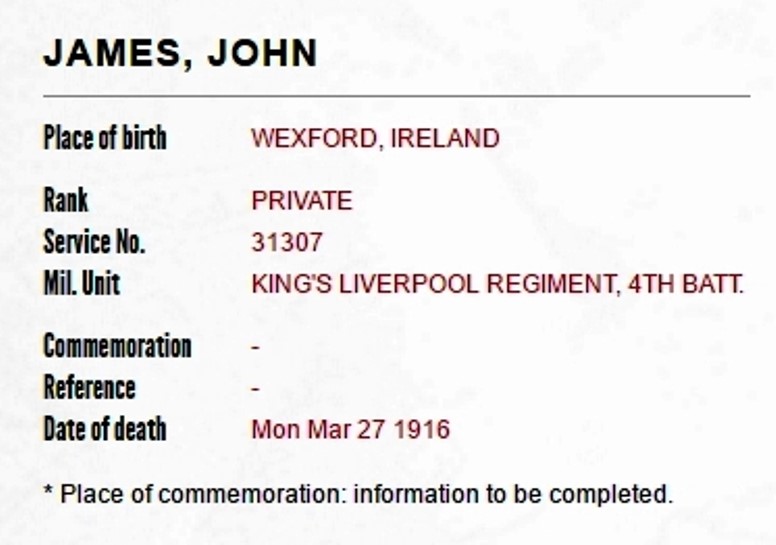
Memorial for John James of County Wexford. Courtesy Ireland’s Memorial Records.
Another website, Ireland’s World War I Veterans 1914-1918, has created a PDF list, updated every three months, which contains over 35,000 names of Irishmen who fought in World War I. If you know or suspect your Irish ancestor may have served in World War I and survived the experience, this is an excellent place to find a clue about his origins.
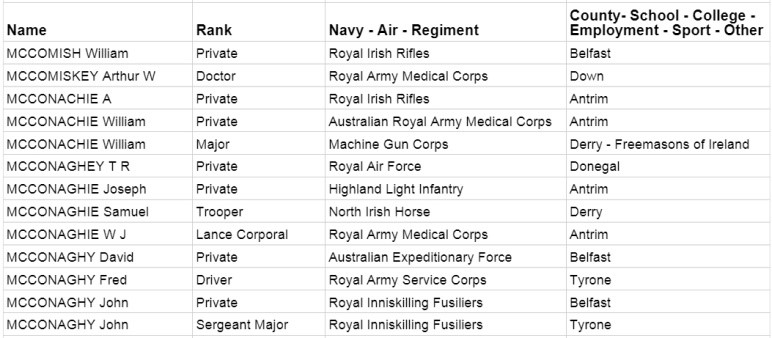
A sample of the list of those who served as created by Ireland’s World War I Veterans 1914-1918.
Although it can be difficult to find the correct place in Ireland for your family’s origins, there are some important clues, both historical and geographical, that can help you pinpoint a place to begin your search in Ireland.
Trace Your Irish Ancestors: In Conclusion
 The 1930 U.S. census can provide an important clue to trace your Irish ancestors, as can your family’s religious heritage. If an Irish ancestor served in World War I, you may be able to determine the county in which he was born. A knowledge of the differences between Northern Ireland and the Republic of Ireland, as well as their location and the counties within those two countries, can help you contact the proper vital records office for those all-important vital records. So, go n-éirí leat! Good luck!
The 1930 U.S. census can provide an important clue to trace your Irish ancestors, as can your family’s religious heritage. If an Irish ancestor served in World War I, you may be able to determine the county in which he was born. A knowledge of the differences between Northern Ireland and the Republic of Ireland, as well as their location and the counties within those two countries, can help you contact the proper vital records office for those all-important vital records. So, go n-éirí leat! Good luck!
The team of expert genealogists at Legacy Tree Genealogists can help bust through your brick walls. They do the research and you enjoy the discoveries!

